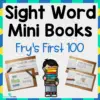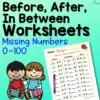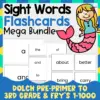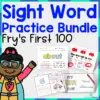Bees are wonderful insects that contribute greatly to our ecosystem. Children should explore how amazing these creatures are through literature. These stories are made for young minds to grasp bees’ value in our daily lives fully.
These ten books are the perfect addition to the lessons that teach different skills and values to children.
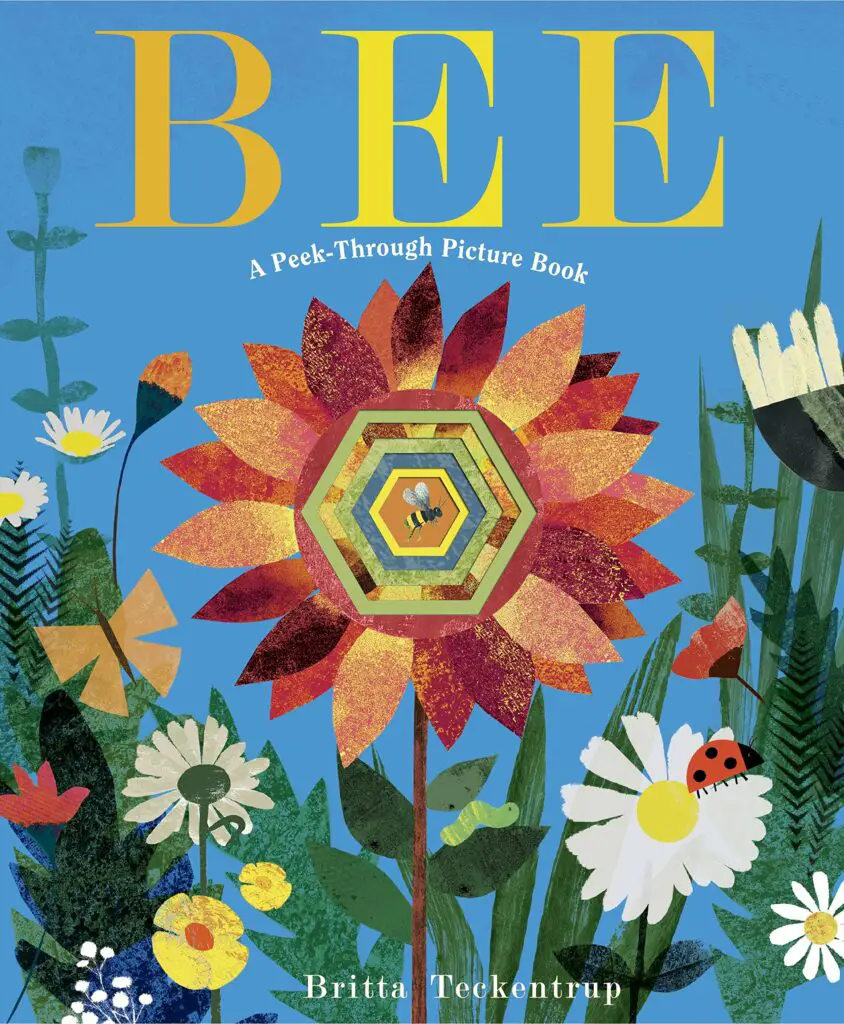
A busy bee preparing to store food for the winter season is the highlight of the book Bee: A Peek-Through Picture Book by Britta Teckentrup. The bee travels a distance to find nectar from flowers, allowing it to collect and save food.
The book is designed with a cutout hexagon on the front cover and the succeeding pages to reveal the little bee peeking through the book. As each page is turned, the hexagon cutout gets smaller.
Amazingly, as the bee finds a good food source, it alerts all the other bees to let the others know the need to work and fill their beehive with nectar.
With a science lesson, children can understand that bees do not just benefit from flowers. They also help the flowers through pollination. Discuss the concept of pollination as a means of reproduction and the mutualism between bees and flowers.
Explain the shape hexagon with a basic geometry lesson. Show pictures of this six-sided shape and let children use loose parts, such as craft sticks or toothpicks, to make this shape. Discuss the importance of the hexagon shape in beehives.
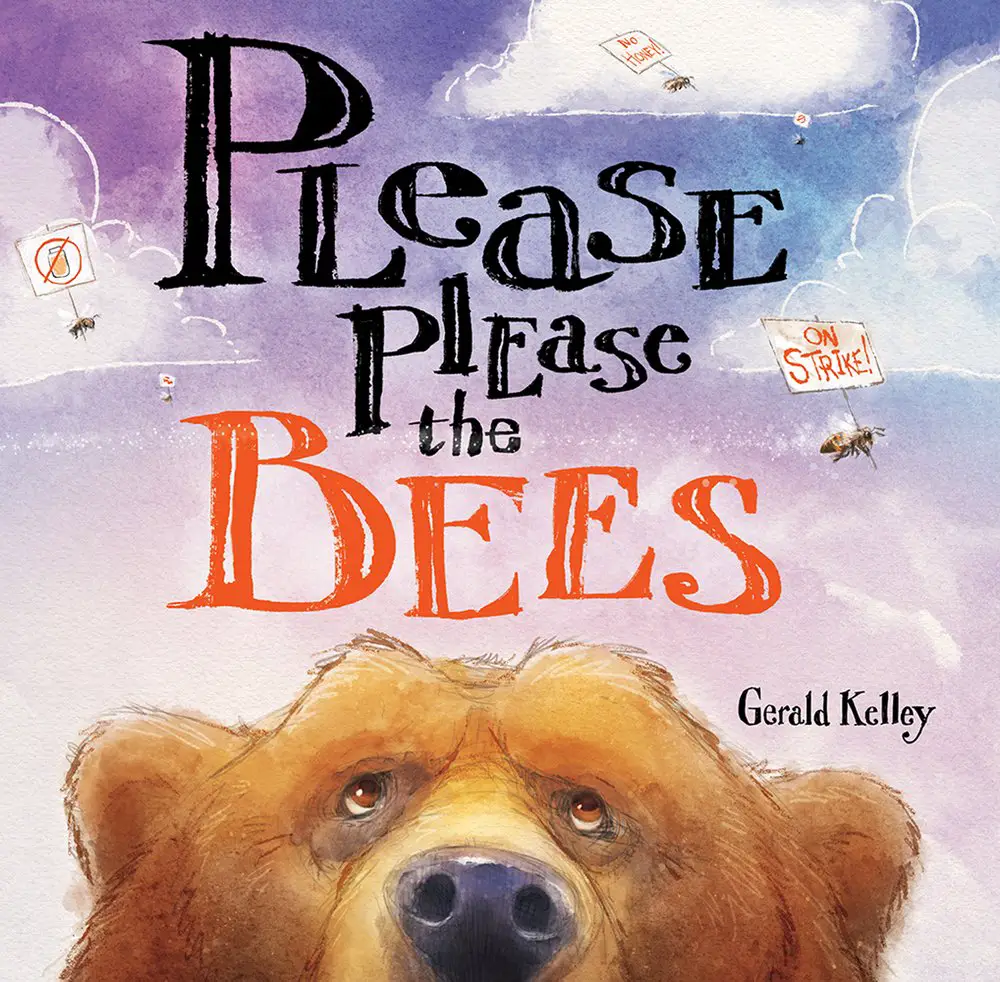
Benedict’s life was sweet, as described in the book Please Please the Bees by Gerald Kelley. Benedict, the bear, thrives on routine and loves his life. Unfortunately, his sweet life did not last long when the bees refused to supply him with honey.
The bees complained about their living and working conditions and decided to quit working for a time. A honeyless bear is a problematic bear. Benedict realized that he needed to make changes for everyone’s sake.
He cleaned the yard and planted flowering plants. He fixed the wooden hives and learned to harvest honey by himself. Benedict learned to value the work these little creatures have put in to provide for him, his beloved honey.
This story is a good way to explain to children about food sources. A science and social studies lesson can let children know where their food comes from and how to get them on their plates.
Another social studies lesson can focus on relationships between workers and bosses. Let children do a role play and provide a relatable situation that can be resolved with proper communication.
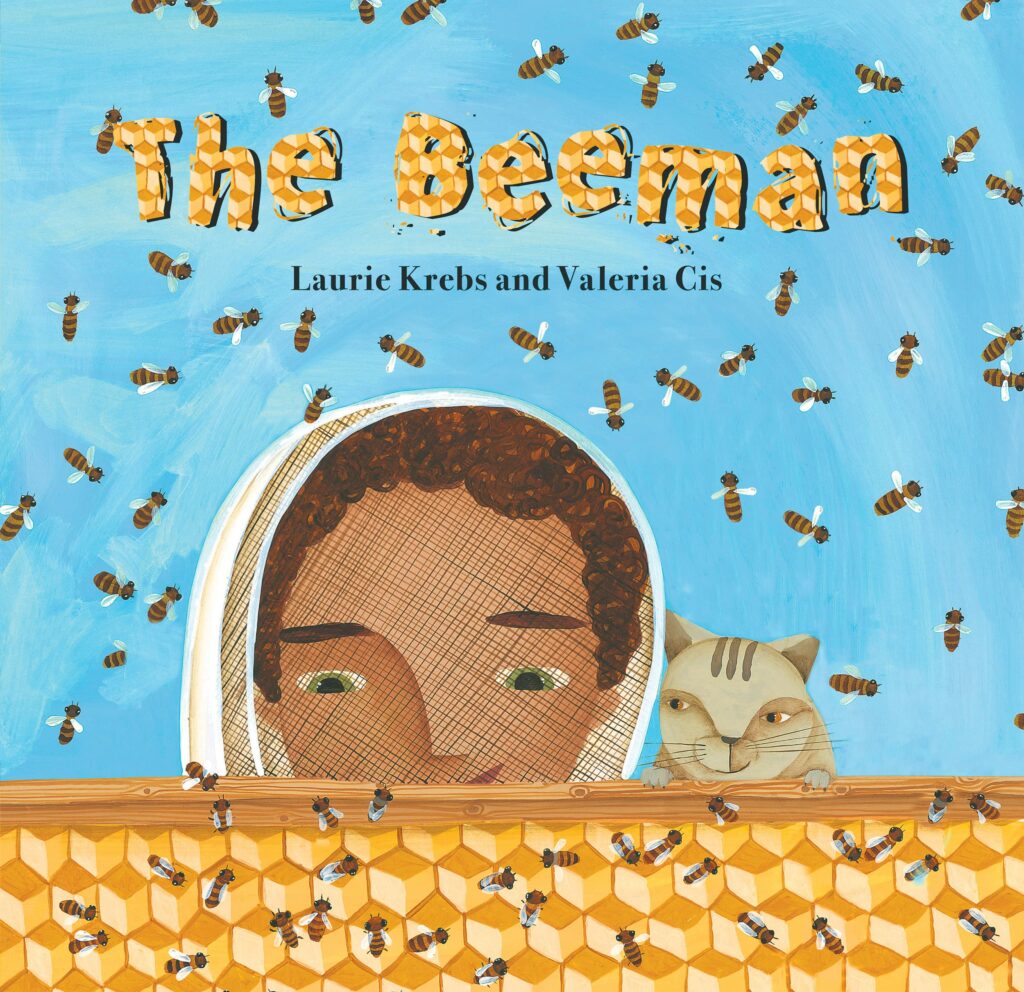
The Beeman by Laurie Krebs explores the work of a beekeeper. A boy was introduced by his grandfather to his career as a beekeeper. They visited the beehives and harvested honey.
The boy learned about the complicated process of collecting honey.
Explain this process to children through a Science lesson. Use videos and pictures so they can see how it is done in real life. Discuss the special outfit of the beekeeper and why it is important to wear one when visiting beehives.
Let children differentiate the beekeeper’s jacket from the children’s jacket. Do the same with the other special clothing for children to understand its unique features.
Help children increase their vocabulary by explaining words from the beekeeper’s tools, such as a smoker, hive tool, and extractor. Use pictures and videos for this part.
In a different science lesson, explain the dynamics of the bee colony. Show pictures of the different bees-queen, drones, workers, and house bees-if necessary. Explain the role of each bee in the colony and its importance.
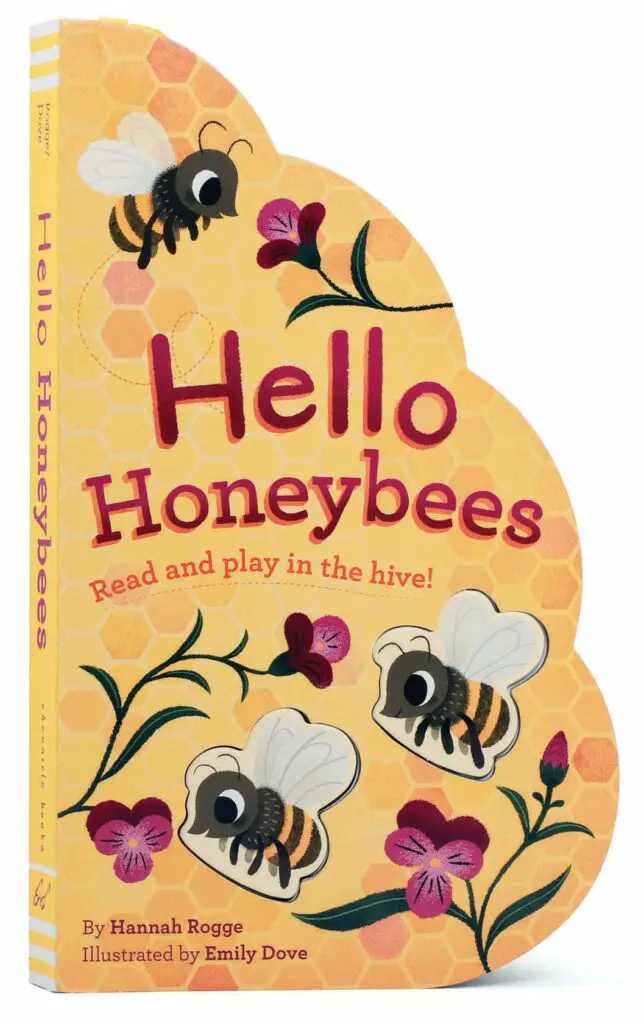
Hello Honeybees: Read and play in the hive! by Hannah Rogge is a shaped board book with bee bookmarks that will make reading interactive and fun. Children are encouraged to use these bees to mimic what the bees in the story do.
As the book is read, let children focus on details by letting them name what they see, count the objects, and name their colors. This step will help children pay attention to the text and the illustrations.
The story mentions a bee dance called waggle. Teach directionality with this dance. Have children pretend their hands are bees and let them move in the right direction. Use cutout flowers and place them all over the room.
Make this more challenging by using the whole body to dance the waggle. Ask the children to dance in the flower’s direction and ask if they are moving left or right.
Explain the work bees need to do in the beehive with a Science lesson. As mentioned in the book, the bees need to make wax, honeycombs, and honey and store the honey for future use. If possible, use videos to show these insect work in real life.
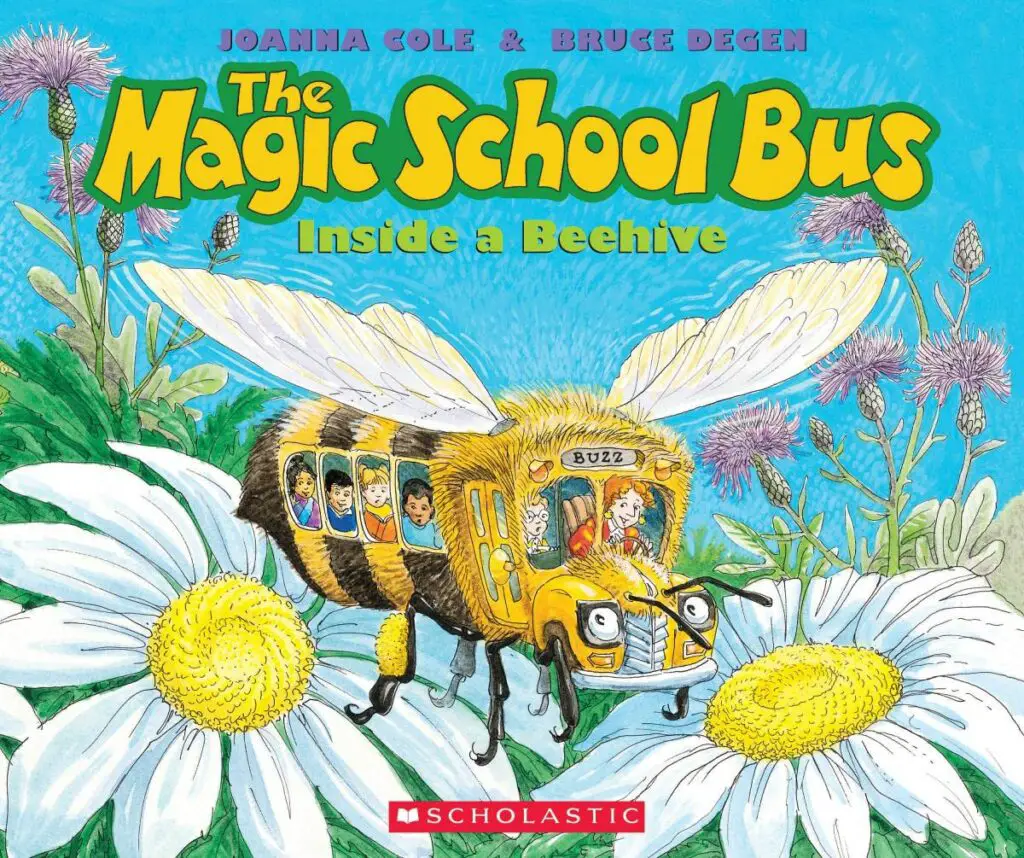
The children explored the life of the bees in the book The Magic School Bus Inside a Beehive by Joanna Cole. The children learned to identify the characteristics of insects, the features of a honeybee, and that bees are social insects.
Many science lessons can be derived from this book. One of which is the concept of social insects. The book mentioned several examples of animals within this group. These are bees, ants, and wasps.
Allow children to learn more about how social insects live and thrive. Compare the bees’ system with the ants’ or the wasps’. Discuss the insects’ home and structure.
For example, bees live in a beehive, while ants live in an anthill. In the beehive are some honeycombs that contain cells shaped into hexagons, while in an anthill are tunnels.
The beehive is found above the ground, while the anthill is on or under the ground. Let children draw these to improve their fine motor skills.
Discuss the different roles of the bees. Let children do a role play for them to understand each type of bee in the colony. This will help improve their oral language skills.
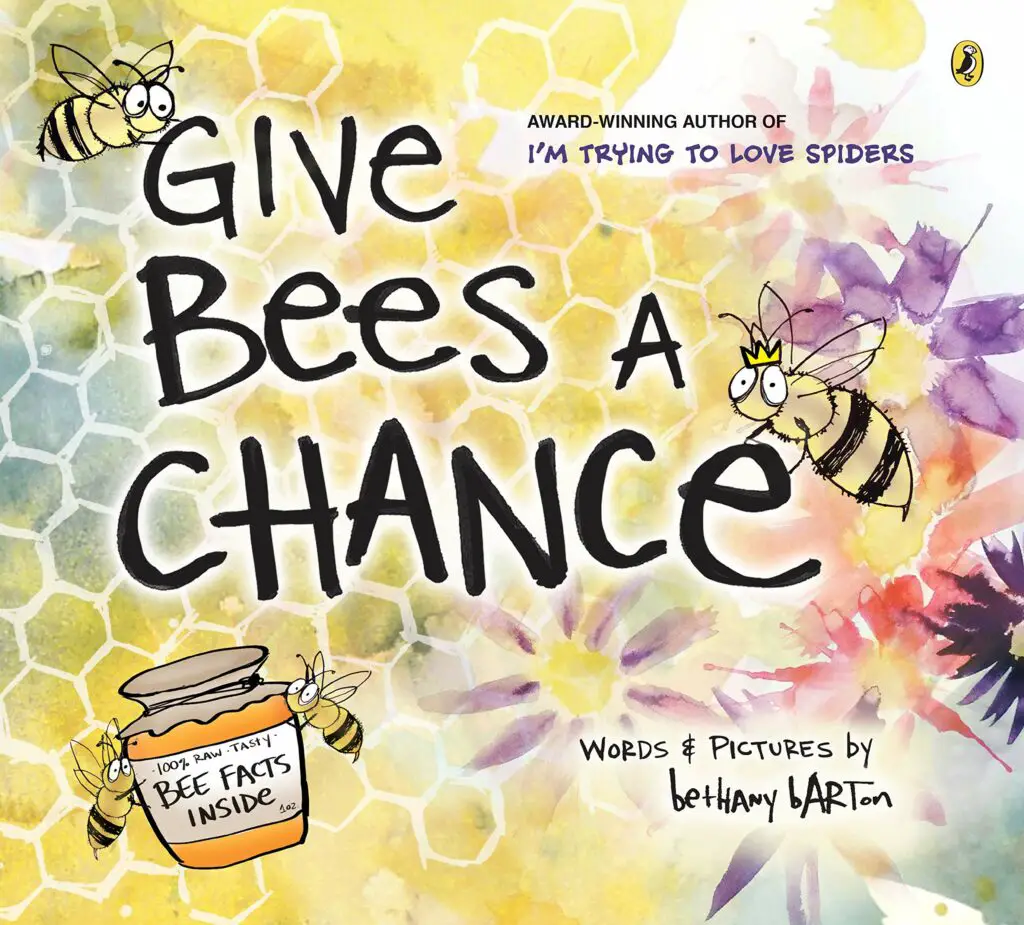
Give Bees a Chance by Bethany Barton explains different concepts about bees, including why bees’ stings are painful and the reason they sting, their anatomy, and the special characteristics that make them unique insects.
In a conversational narration that children will easily understand, the book also explains that bees are one of the creatures that lived even during ancient times.
Discuss the process of making honey based on the book. Let children sequence the events to understand the beginning and end steps of the process. This task will help with their cognitive skills and memory.
According to the book, bees deliver pollen to plants that cannot move. Turn this concept into a game that will help children work on their gross motor skills and coordination.
Let each child take turns being the bee that delivers pollen while the others are flowers that are stationary. Let the bee carry as many balls as possible in one go to deliver to the different flowers. The balls resemble pollen. Use different sizes if possible.
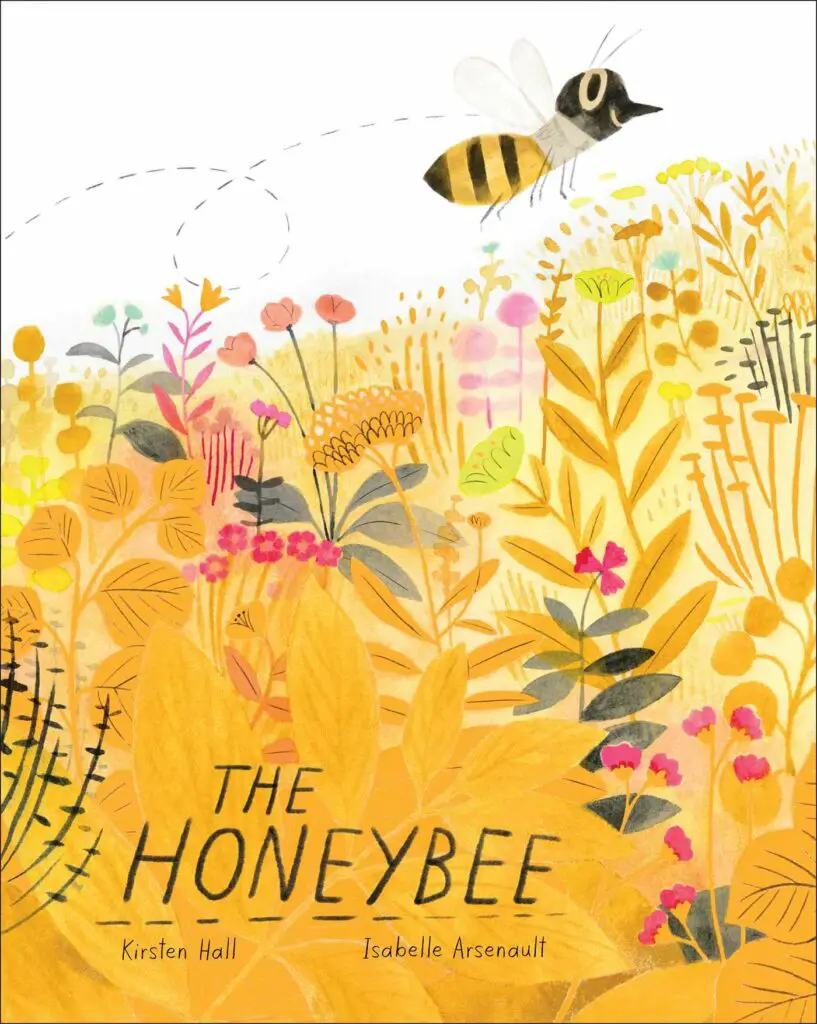
Journey with the bees as they give readers a glimpse of their daily lives in The Honeybee by Kirsten Hall. The honeybees are busy flying around to look for food and collecting nectars!
Let children make a journal entitled “A Day in the Life of a Bee and Me.” Children will need to list down what bees need to do. Younger children may draw instead of writing the words. This step will help improve their fine motor skills and imagination.
Next, have the children make their schedule for a day. They may start with having breakfast, going to school, and end with sleeping at night. Let children discover who is busier. Learning to compare and differentiate helps with their cognitive skills.
The book mentions that bees gather nectar and turn it into honey for their food. Conduct a survey of the children’s favorite food in different categories. This may include their favorite fruit, vegetables, snack, dish, holiday treats, etc.
Tally the scores to find out what most kids prefer. This great Math activity will help build their counting skills and help them understand a tally chart.
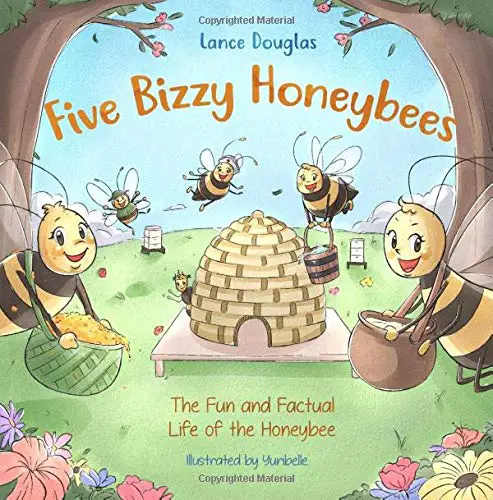
The Five Bizzy Honey Bees by Lance Douglas is about the five honeybees busy working to make their colony thrive. The first three bees leave the colony to look for nectar, pollen, and water.
The last two bees must stay in the beehive to help look after the baby bees and guard them against danger. These bees will work all spring and summer to keep ample food for the coming winter.
Turn this story into a game that children will love. Let them pretend as bees and scatter different cutouts or pictures of colorful flowers. Let children take turns gathering as many flowers as possible in a few seconds.
Use a basket or a box for children to place the flowers. Make it more challenging by giving specific conditions. Let them take just a single color or a particular flower, for example, roses, daisies, etc.
This activity will help improve their gross motor skills, build their focus and attention, improve their color recognition skills, and increase their vocabulary by learning the different names of flowers.
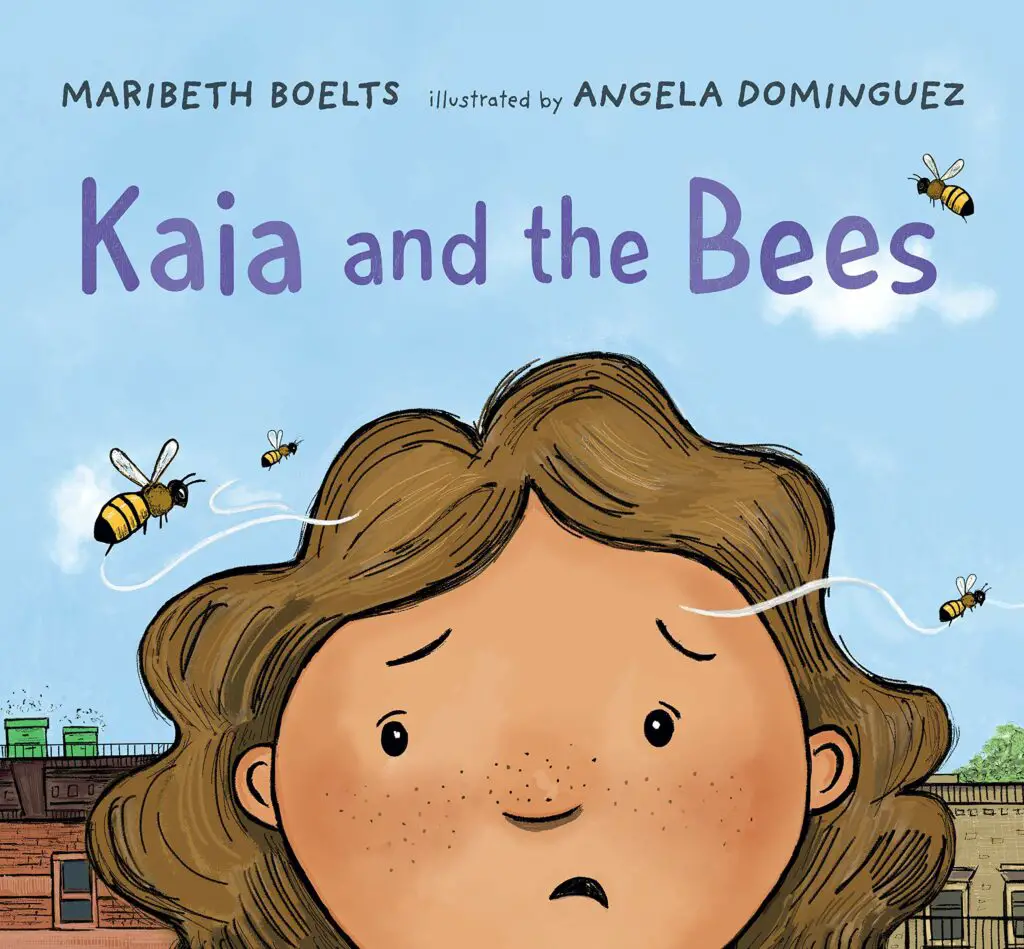
Kaia and the Bees by Maribeth Boelts tell the story of a girl afraid of bees. To make matters worse, her Dad is a beekeeper, and he keeps the beehives on the rooftop of their building.
This book is a great tool for discussing the value of bees in our daily lives. Through a science lesson, explain the bees’ contributions to our environment. Discuss the dangers that honeybees face, as mentioned in the book.
In the book, Kaia tries to look for the queen bee. Let children do some queen bee hunting by setting up a sensory bin filled with different plastic insects or using pictures if unavailable. Let children dig through the sensory bin to find the queen bee.
Kaia was so scared of the bees that she refused to be part of her Dad’s beekeeping activity. Discuss children’s fears with this idea. Ask children what they are afraid of.
Like the story, help the children process their emotions by figuring out different ways to manage their fears. Let them find ways to combat their fears or think of alternative ways to cope. This will help them develop social-emotional learning.
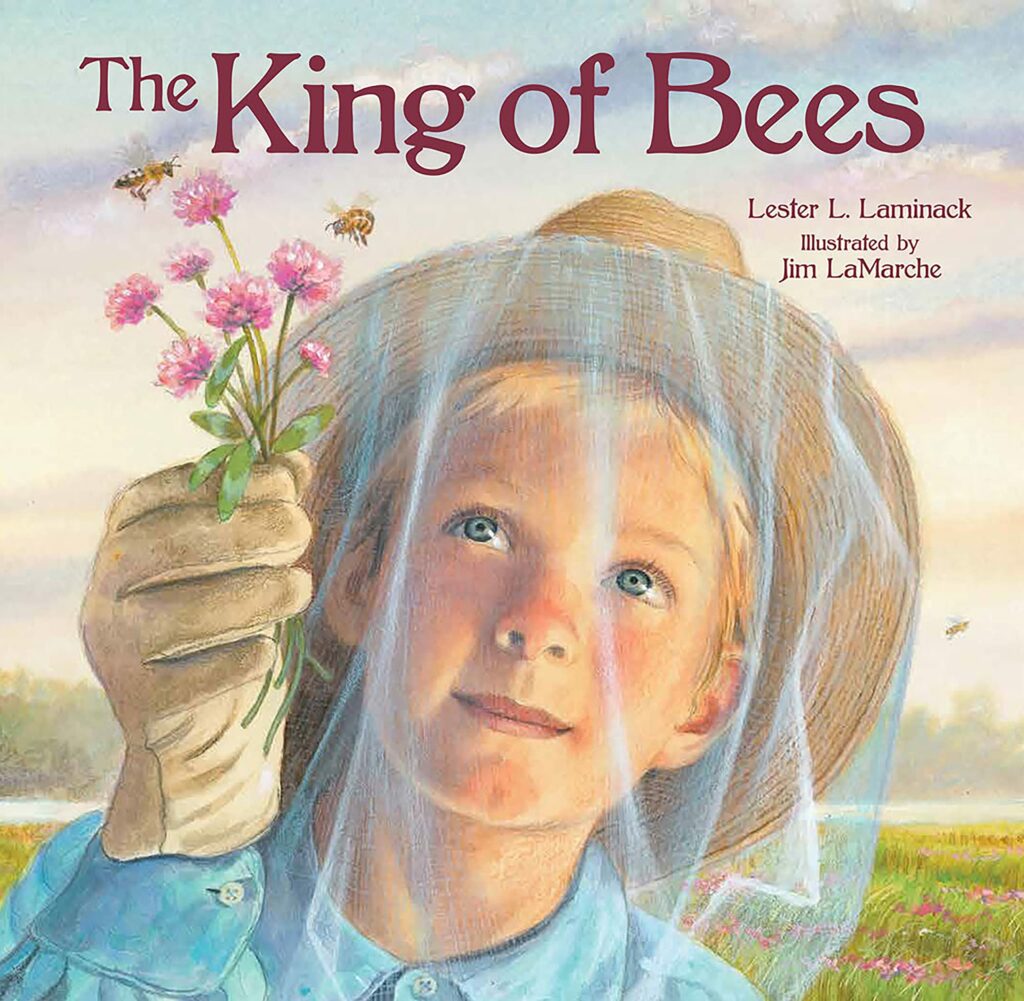
A boy named Henry learned about beekeeping on his aunt’s farm, as told in The King of Bees by Lester L. Laminack. Henry realized that in a colony, most of the bees are females, and they each have different tasks that they need to do.
Henry discovered that when a new queen is present, the old queen may leave with the other sister bees to form a new colony. Teach the bees’ life cycle with a science lesson to help children understand the bees’ behavior in the colony.
Teach some math skills with this book. Basic addition and subtraction concepts can be incorporated into the book’s story. Use task cards, math mats, and pictures or bee cutouts. Use the different bees in the colony to tell a number story.
In addition, say, “Two new worker bees are added to the other two worker bees. How many worker bees does the colony have now?”
For subtraction, say, “The queen bee is leaving the six other bees. How many are left in the colony?”
Let children use counters and other aids to help them understand the idea and arrive at the correct answer.
Conclusion
Bees are crucial in our environment. Children will have fun learning about bees. Use these books to teach the insect’s anatomy, life cycle, contribution to food production, and plant reproduction.
Consider letting children work on some bee-themed arts and crafts to make lessons more interesting and exciting. Children will learn more about these fantastic creatures and become aware of the threats to their survival.
More activities and resources to check out:
Thank you for reading!



